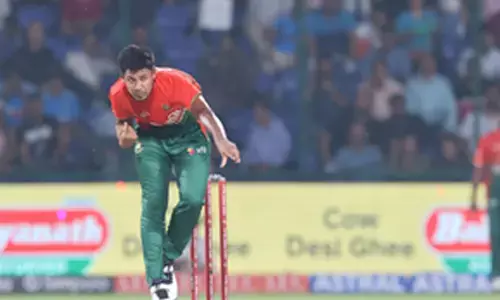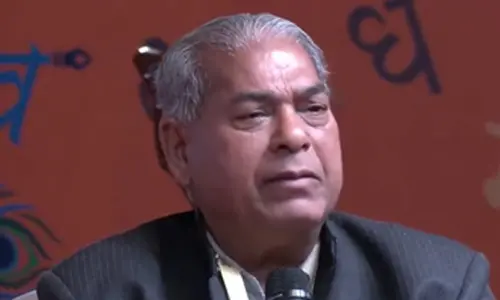Medical Camp in Bonkur Village in Response to Mysterious Illness Outbreak

Bonkur village recently experienced an outbreak of a mysterious illness that left the community in distress.
Gadwal: Bonkur village recently experienced an outbreak of a mysterious illness that left the community in distress. The severity of the situation was highlighted in a news report titled "Bonkur Gripped by Mysterious Illness," published on Monday. This prompted immediate action from the district health authorities, led by District Medical Health Officer Siddappa, who organized a medical camp in the village to investigate the situation and offer medical relief.
Immediate Medical Intervention: The primary objective was to provide on-the-spot medical assistance to affected individuals and assess the spread and severity of the illness.
Data Collection:
Health officials aimed to gather detailed information on the symptoms, possible causes, and affected population demographics to help in diagnosing the illness and formulating an appropriate response.
Community Support:
The presence of local leaders, including members of the all-party committee like Nagar Doddi Venkataramudu, Morugu Veeresh, and Shanthi (Radha), was crucial in reassuring the villagers and providing them with emotional support during the crisis.
Execution of the Medical Camp:
The medical camp was methodically organized with health professionals visiting the homes of the affected. This door-to-door approach ensured comprehensive coverage and allowed the medical team to collect firsthand information. The data gathered included patient symptoms, duration of illness, and any common factors among those affected, such as water sources, food consumption, or recent travel.
District authorities received detailed reports from the medical team, which would be instrumental in understanding the nature of the illness and guiding further action.
Community Involvement and Support:
The involvement of local leaders played a vital role in the camp’s success. Leaders like Nagar Doddi Venkataramudu, Morugu Veeresh, and Shanthi (Radha) not only participated in the camp but also engaged with the patients and their families. Their involvement helped to build trust between the community and health officials, which is essential for effective crisis management.
The leaders’ participation also highlighted the community's concern and commitment to resolving the crisis, ensuring that the authorities remained attentive to the issue.
Challenges and Observations:
High Treatment Costs:
A significant number of patients had already sought treatment at hospitals in Kurnool, resulting in substantial financial burdens. The costs incurred in lakhs indicate that the illness is not only severe but also requires specialized treatment that may not be available locally.
Psychological Impact:
The mysterious nature of the illness has likely contributed to heightened anxiety and fear among the villagers. The emotional and psychological toll on the community is evident in their desperate pleas to the authorities for a resolution.
Need for a Thorough Investigation:
The symptoms and spread pattern suggest that the illness may be linked to environmental or infectious causes, necessitating a detailed epidemiological investigation. Identifying the source is crucial to prevent further spread and to develop a targeted treatment plan.
Recommendations:
Comprehensive Medical Examination:
A follow-up medical camp should be conducted with a broader team, including specialists in infectious diseases, toxicology, and environmental health, to conduct more thorough examinations and tests.
Financial Assistance:
The district administration should consider providing financial aid to those who have incurred heavy expenses for treatment. This would help alleviate the financial strain on affected families.
Public Health Education:
There should be a concerted effort to educate the villagers on preventive measures, hygiene practices, and the importance of early medical consultation to avoid further complications.
Long-term Monitoring:
Establish a monitoring mechanism to track the health of the villagers over the coming weeks. This could include regular health check-ups and the establishment of a local health task force.
Infrastructure Improvement:
If the investigation reveals environmental factors, such as contaminated water or poor sanitation, the authorities must prioritize infrastructure improvements to mitigate these risks.
Conclusion:
The prompt response from the district health authorities in organizing a medical camp was a crucial step in addressing the mysterious illness in Bonkur village. While immediate medical needs were met, the situation requires ongoing attention, including a detailed investigation into the illness's cause, financial support for affected families, and long-term health monitoring to ensure the well-being of the community. The involvement of local leaders has been instrumental in maintaining community trust, and their continued engagement will be vital as the authorities work toward a resolution.
















